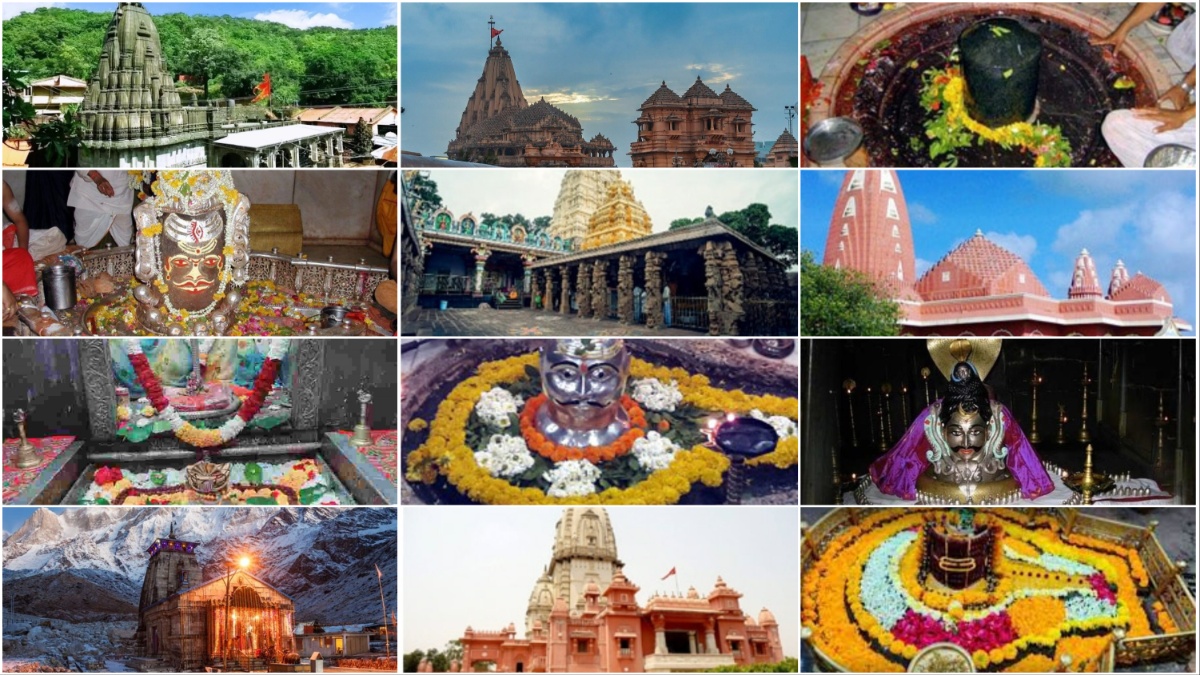The 12 Jyotirlinga Temples in India are twelve important and revered Hindu temples dedicated to Lord Shiva, a major god in the Hindu religion. The word “Jyotirlinga” means a divine and radiant symbol of Lord Shiva’s power and presence. These temples have significant religious and historical importance, and they are visited by millions of devotees from around the world.
These 12 Jyotirlingas are located in different parts of India, including the Himalayas, riverbanks, and cities. Each temple has its own unique story and legend associated with it, making them important pilgrimage sites. Whether you’re a devoted follower of Lord Shiva or someone interested in exploring India’s rich cultural and religious heritage, visiting these temples can provide a deep and meaningful experience, giving you insight into the beliefs and traditions of this ancient land.
here is a detailed description of each of the 12 Jyotirlingas, along with their stories and significance:
1. Somnath :
Location: Prabhas Patan, near Veraval in Saurashtra, Gujarat.
Significance: Somnath is one of the twelve Jyotirlingas and holds immense spiritual significance for Hindus. It represents the eternal nature of Lord Shiva.
Story: Long ago, in the sacred land of India, there existed a magnificent temple dedicated to Lord Shiva. This temple was known as the Somnath Jyotirlinga and was renowned throughout the subcontinent for its grandeur and sanctity. The story of Somnath Jyotirlinga is not just a tale of a holy shrine but a saga of resilience, faith, and the enduring power of devotion.
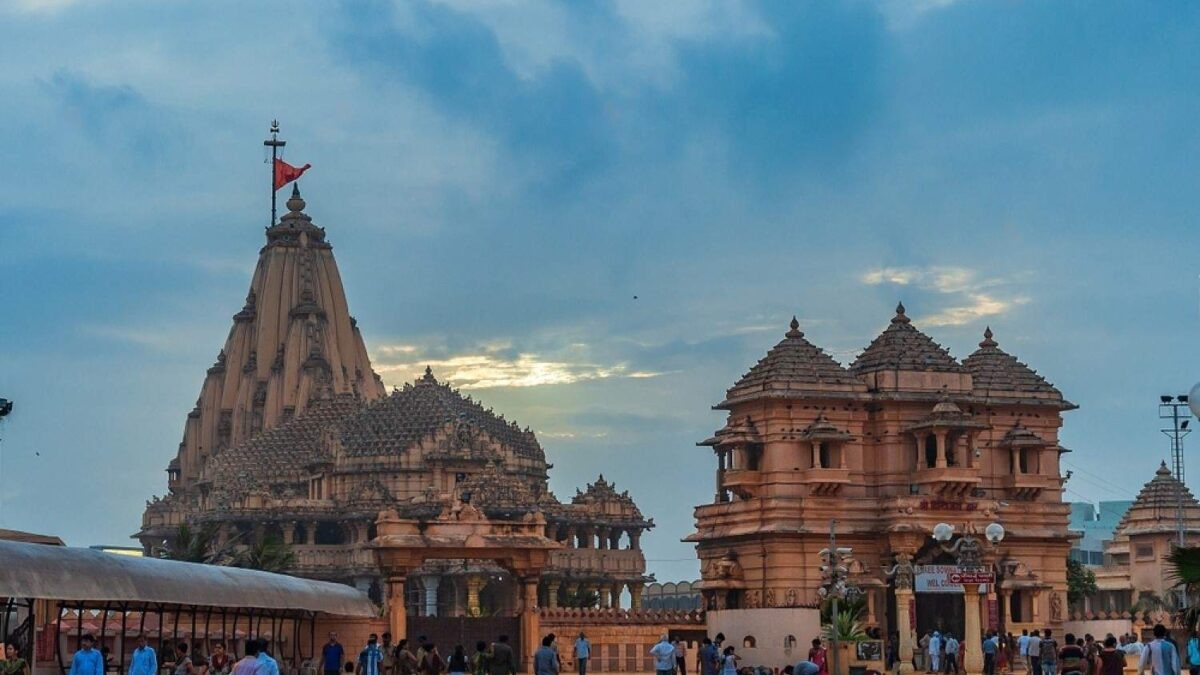
In the ancient city of Prabhas Patan, nestled along the western coast of Gujarat, stood the grand Somnath temple. The temple was adorned with exquisite architecture, precious gemstones, and ornate carvings, but it was the Jyotirlinga inside that held the highest reverence. This lingam was believed to be self-manifested, a symbol of Lord Shiva himself.
The legend of Somnath Jyotirlinga began with the divine promise made by Lord Shiva to his devotee, King Bhagirath of the Suryavanshi dynasty. The king had undertaken a great penance to bring the sacred river Ganga to Earth, so it could purify the souls of his ancestors. Lord Shiva was pleased with Bhagirath’s devotion and granted his request, promising to establish a Jyotirlinga at Prabhas Patan to bless the land.
Centuries passed, and the grandeur of Somnath Jyotirlinga attracted pilgrims from far and wide. The temple was a symbol of faith and unity for the people of India. However, it also attracted the covetous eyes of invaders. In 1026 CE, Mahmud of Ghazni, a fierce Turkic conqueror, set his sights on the riches of the Somnath temple.
Mahmud’s army descended upon Prabhas Patan, and despite the valiant efforts of the temple priests and the people, the invaders breached the temple’s defenses. The sacred shrine was looted, its treasures plundered, and the Jyotirlinga defiled. The invaders, in their greed, attempted to destroy the lingam.
The destruction of the Jyotirlinga shook the foundations of the Indian subcontinent. It was a dark time for the faithful, as the heart of their religious beliefs lay in ruins. However, the spirit of devotion and faith was unbroken. The people of Prabhas Patan and the entire nation resolved to rebuild the temple and restore the Jyotirlinga.
The story of Somnath Jyotirlinga’s revival is a testament to human resilience and the unwavering power of faith. Devotees from all corners of India donated their wealth, labor, and time to resurrect the temple. The new Somnath temple rose from the ashes, grander and more magnificent than ever.
The Jyotirlinga, however, presented a unique challenge. Its original form had been desecrated and lost forever. To address this, a lamp was placed in the sanctum sanctorum, which was declared to be the eternal flame representing the Jyotirlinga. This sacred fire symbolized the undying spirit of devotion and the divine presence of Lord Shiva himself.
The lamp, fueled by the devotion of countless pilgrims, has been burning continuously for centuries. The Somnath temple stands as a symbol of resilience, reminding all who visit of the enduring power of faith.
Today, the Somnath Jyotirlinga is a revered pilgrimage site, attracting millions of devotees every year. The temple complex stands proudly along the Arabian Sea, bearing witness to the ebb and flow of history. It represents the indomitable spirit of the Indian people and their unwavering faith in the divine.
The story of Somnath Jyotirlinga continues to inspire generations, reminding us that even in the face of adversity, faith can triumph, and the divine promise can be fulfilled. The flame of devotion, like the eternal lamp in the sanctum, continues to burn brightly, a beacon of hope and spirituality for all.
2. Mallikarjuna Jyotirlinga:
Location: Shri Shaila Mountain in Andhra Pradesh.
Significance: Mallikarjuna Jyotirlinga represents the divine union of Lord Shiva and Parvati, symbolized as Mallika and Arjuna.
Story: In the heart of Andhra Pradesh, amidst the lush Eastern Ghats, lies the sacred Shri Shaila Mountain. Perched majestically atop this serene range is the revered Mallikarjuna Jyotirlinga, a temple of profound significance in the world of Hinduism. The story of Mallikarjuna Jyotirlinga is a tale of divine love and eternal union.
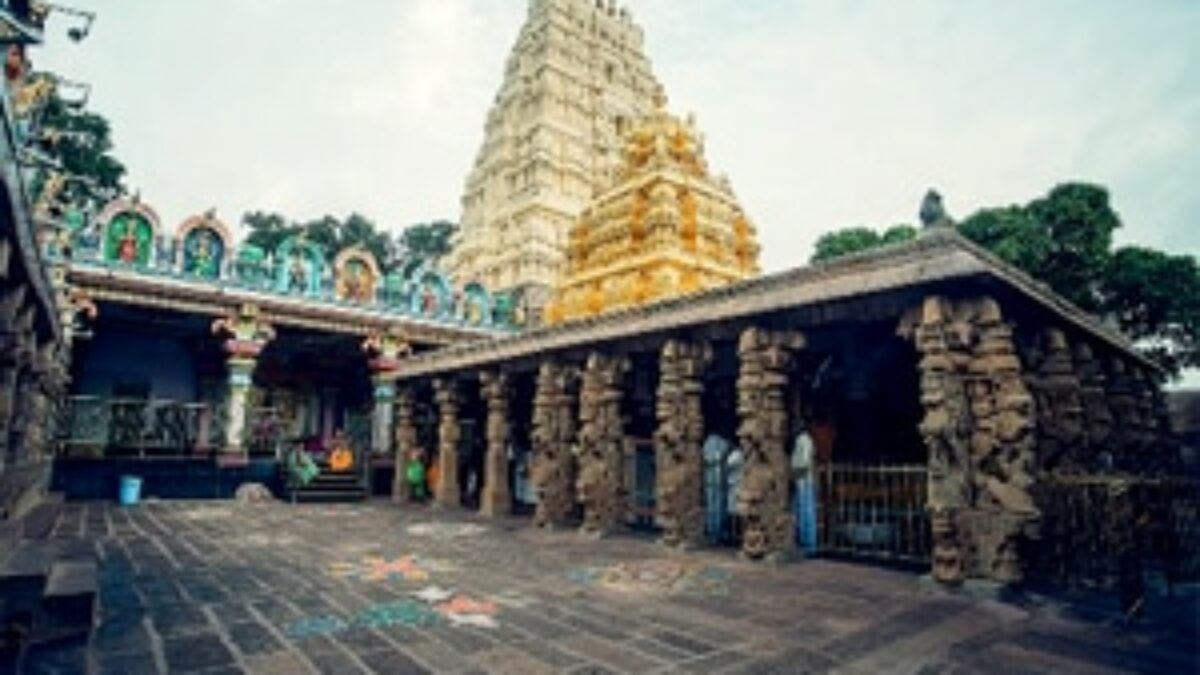
In ancient times, in the celestial realm, there lived a beautiful maiden named Parvati. She was the divine daughter of the mountain king, Himavan, and possessed unparalleled beauty and grace. Her virtues were sung by celestial beings, and tales of her radiance reached the heavens. Parvati, however, had a deep desire – to be united with Lord Shiva, the Lord of Destruction.
Parvati began to perform rigorous penance to win Shiva’s heart, choosing the sacred Shri Shaila Mountain as her abode. Her devotion was so unwavering that even the gods themselves marveled at her steadfastness.
To test Parvati’s devotion, Lord Shiva decided to assume the guise of a wild hunter and appeared before her. He questioned her sincerity, ridiculed her beauty, and declared that he was unworthy of her love. But Parvati’s love was unwavering. She saw past the guise and recognized the cosmic truth. She persisted in her meditation, undeterred.
Pleased with Parvati’s devotion, Lord Shiva revealed his true form and declared his love for her. The celestial couple, Shiva and Parvati, were finally united, symbolizing the eternal union of the male and female aspects of the divine.
It is said that Lord Shiva and Parvati decided to reside on the sacred Shri Shaila Mountain, where their love had blossomed. To commemorate this divine union, a Jyotirlinga, representing Lord Shiva, was established atop the mountain. This sacred shrine came to be known as Mallikarjuna Jyotirlinga, with ‘Mallika’ signifying Parvati’s love.
Devotees flocked to the temple to seek the blessings of Lord Mallikarjuna and the divine mother Parvati. The temple complex, nestled in the natural beauty of the Eastern Ghats, became a symbol of divine love and a site of spiritual awakening.
Mallikarjuna Jyotirlinga, perched atop Shri Shaila Mountain, has continued to be a source of divine inspiration for centuries. Pilgrims from all corners of the country visit this sacred abode to seek the blessings of Lord Mallikarjuna and Parvati.
The temple is a marvel of architectural beauty, featuring intricate carvings and a serene ambience that envelops devotees in a spiritual embrace. The temple’s festivals and rituals celebrate the eternal union of Shiva and Parvati, embodying the power of love and devotion.
The story of Mallikarjuna Jyotirlinga teaches us that true love and devotion transcend all tests and challenges. The divine union of Shiva and Parvati symbolizes the harmony and balance of the cosmos, an eternal embrace that brings peace and spiritual awakening to all who visit this sacred mountain.
Mallikarjuna Jyotirlinga at Shri Shaila Mountain in Andhra Pradesh continues to be a testament to the unbreakable bond of love and devotion. It is a place where the earthly and divine meet, and the eternal flame of faith burns brightly in the hearts of countless devotees who embark on the timeless pilgrimage to this sacred site.
3. Mahakaleshwar :
Location: Ujjain, Madhya Pradesh.
Significance: Mahakaleshwar Jyotirlinga is believed to be the only one that provides both light and sound.
Story : Deep within the heart of India, in the ancient city of Ujjain, lies the sacred Mahakaleshwar Jyotirlinga. It is not merely a temple but a timeless symbol of devotion and divine grace. The story of Mahakaleshwar Jyotirlinga is a testament to the unfathomable power of Lord Shiva and the enduring faith of his devotees.
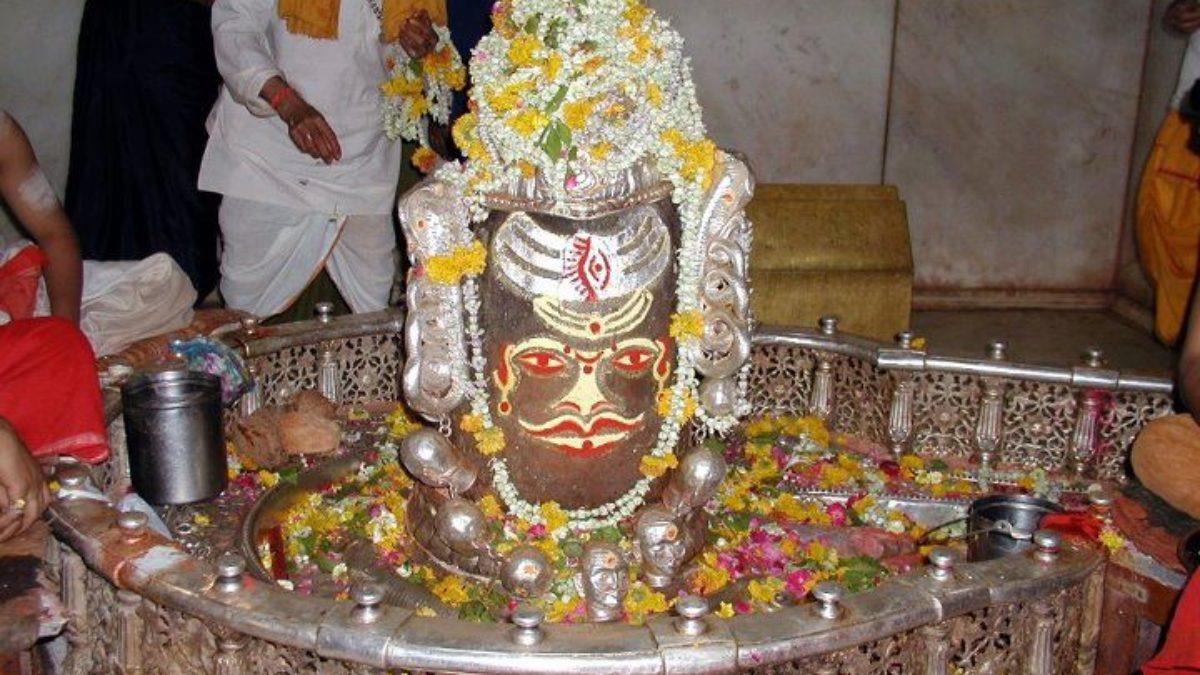
Ujjain, one of the oldest cities in India, has been a center of spiritual and cultural significance for millennia. It is nestled on the banks of the Shipra River, where the confluence of ancient traditions and sacred rituals takes place. The city’s spiritual aura is amplified by the presence of the sacred Mahakaleshwar Jyotirlinga.
The origins of Mahakaleshwar Jyotirlinga are shrouded in myth and legend. It is said that a devout brahmin named Chandrasen lived in Ujjain. He was a devout worshipper of Lord Shiva, and his unwavering devotion touched the heart of the divine.
One day, while drawing water from the Shipra River, Chandrasen found that his pitcher was always full, no matter how much water he poured out. He realized that this was a divine miracle and that the Lord was revealing himself through this mysterious occurrence.
The miraculous event of the self-replenishing pitcher led to the discovery of the Jyotirlinga beneath the river. Lord Shiva revealed himself as Mahakaleshwar, a fearsome and awe-inspiring form of the deity. The people of Ujjain were overjoyed and immediately constructed a temple to honor the sacred Jyotirlinga.
The Mahakaleshwar Jyotirlinga is unique in that it is the only Jyotirlinga known to be a dakshinamurti, a form of Shiva facing south. It is also notable for the Dakshinamurti Kala, a special worship performed during the evening, which includes lighting a lamp with consecrated sandalwood paste, symbolizing the eternal flame of Lord Shiva’s presence.
Devotees believe that Lord Mahakaleshwar is the guardian of time and blesses them with long life and protection from untimely death.
One of the most famous rituals at the Mahakaleshwar temple is the Bhasma Aarti. This daily ceremony involves applying sacred ash to the Jyotirlinga as a mark of reverence to Lord Shiva. Thousands of pilgrims gather to witness this breathtaking ceremony, which takes place in the early morning hours.
The Bhasma Aarti symbolizes the transient nature of human life and the ultimate reality of death, emphasizing the importance of devotion and spirituality in one’s journey.
The Mahakaleshwar Jyotirlinga at Ujjain has been a place of pilgrimage and devotion for countless seekers. It stands as a living testament to the unshakable faith of devotees and the timeless presence of Lord Shiva.
The story of Mahakaleshwar Jyotirlinga is a reminder that the divine is ever-present, waiting to reveal itself to those who approach with a sincere heart. It is a place where the mortal transcends into the divine, where the river of time meets the ocean of eternity, and where devotees find solace and spiritual awakening in the embrace of Mahakaleshwar.
4. Omkareshwar :
Location: Mandhata Island in the Narmada River, Madhya Pradesh.
Significance: The island of Omkareshwar resembles the sacred “Om” symbol when viewed from above.
Story: Amidst the serene waters of the Narmada River in the heart of Madhya Pradesh, there lies the sacred Mandhata Island, home to the revered Omkareshwar Jyotirlinga. The story of Omkareshwar Jyotirlinga is a tale of devotion, spirituality, and the eternal power of Lord Shiva.
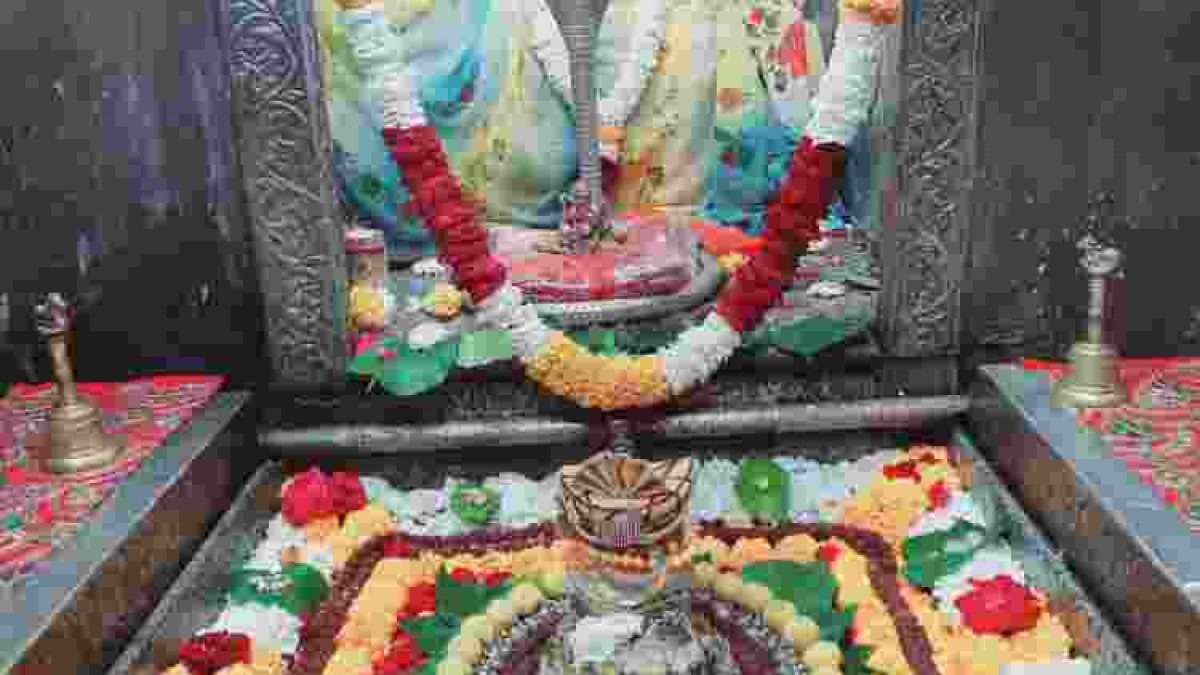
The Narmada River, often called the lifeline of Madhya Pradesh, flows gracefully through the state. On this river, an island was formed in the shape of the sacred “Om” symbol, a sign of Lord Shiva. The island came to be known as Mandhata Island, and it was destined to be the abode of the Omkareshwar Jyotirlinga.
In ancient times, the land surrounding Mandhata Island was ruled by King Mandhata, a devout devotee of Lord Shiva. He yearned for the presence of a Jyotirlinga in his kingdom and fervently prayed to the divine to fulfill his wish. Impressed by his unwavering devotion, Lord Shiva agreed to manifest as a Jyotirlinga on the island.
The news of this divine occurrence spread far and wide, and pilgrims began flocking to Mandhata Island to witness the sacred manifestation. Omkareshwar, a symbol of the Om sound that signifies the essence of the universe, was born.
Not far from Omkareshwar, on the opposite bank of the Narmada, lies the Mamleshwar Jyotirlinga. According to legend, Lord Shiva himself installed the Mamleshwar Jyotirlinga to bless devotees who could not cross the river to visit Omkareshwar due to its swift currents.
The union of Omkareshwar and Mamleshwar creates a unique spiritual ambience, symbolizing the harmonious balance of the male and female aspects of the divine.
The Omkareshwar Jyotirlinga temple, dedicated to Lord Shiva, is a magnificent structure adorned with intricate carvings and a tranquil ambiance. Pilgrims come from all over the world to seek the blessings of Lord Shiva and to experience the spiritual resonance of the island.
The circumambulation of Mandhata Island, known as the Parikrama, is an essential part of the pilgrimage. Devotees walk the path that encircles the island, offering prayers and seeking blessings at various shrines dedicated to deities and sages.
Omkareshwar Jyotirlinga is not just a physical shrine but a symbol of spiritual awakening. It represents the omnipresence of the divine, the cyclical nature of life, and the ultimate unity of the individual soul with the universal consciousness.
Pilgrims and seekers come to Omkareshwar to find solace, seek knowledge, and experience the divine presence. The island’s natural beauty, nestled within the Narmada River, adds to the spiritual allure, making it a place where the earthly and the divine meet.
the story of Omkareshwar Jyotirlinga at Mandhata Island is a tale of devotion, faith, and the unbreakable connection between the human soul and the divine. It is a pilgrimage that transcends time and space, reminding us that the spiritual journey is a path towards realizing the eternal oneness of the universe.
5. Kedarnath :
Location: Rudraprayag district, Uttarakhand.
Significance: Kedarnath is one of the holiest temples in Hinduism and is part of the Char Dham Yatra.
Story: Nestled in the pristine Himalayan ranges, within the Rudraprayag district of Uttarakhand, lies the sacred Kedarnath Jyotirlinga. This Jyotirlinga is not just a place of worship but a testament to the enduring faith of Lord Shiva’s devotees. The story of Kedarnath Jyotirlinga is a journey of devotion, resilience, and the divine connection between the mortal and the immortal.
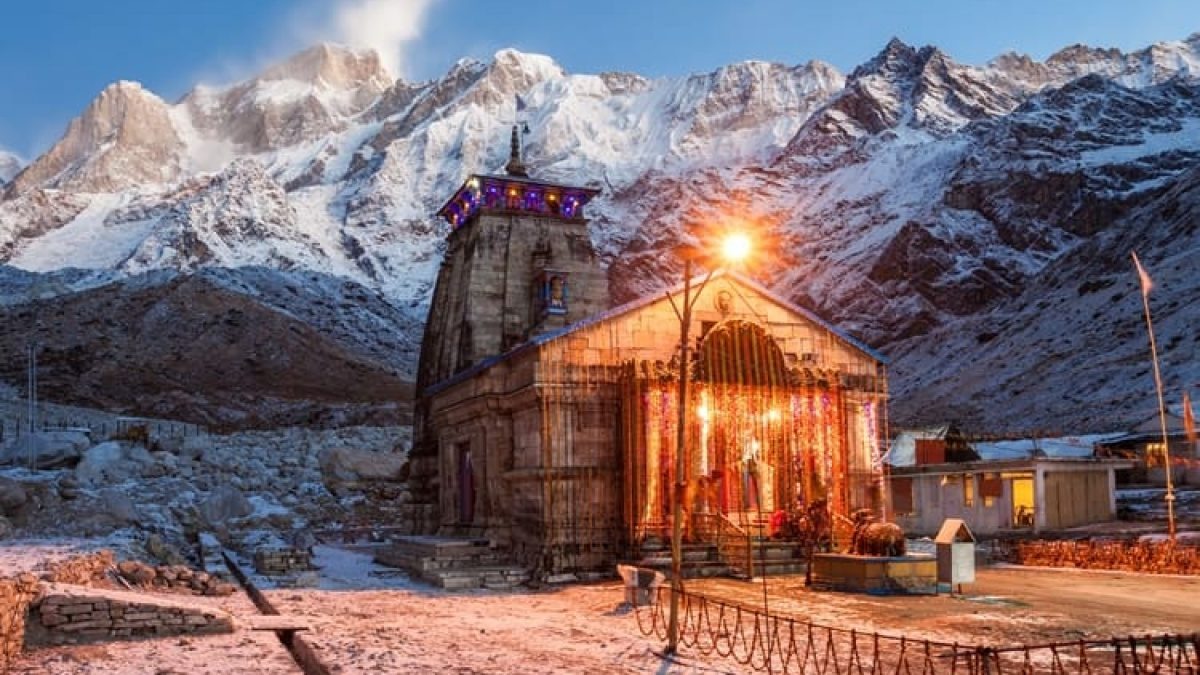
The Himalayas, the majestic abode of countless deities, provide a fitting backdrop to the spiritual tapestry of India. Among the peaks and valleys of this sacred range stands Kedarnath, a place where the earthly and the divine converge.
According to Hindu mythology, Kedarnath holds a special place in the hearts of devotees due to a sacred legend. It is believed that after the great Kurukshetra War in the Mahabharata, the Pandava brothers sought Lord Shiva’s blessings to atone for their sins in the battle. Shiva, in the form of a bull, eluded them and eventually revealed himself at Kedarnath, where his hump is said to be venerated.
The Pandavas, upon realizing Shiva’s divine presence, constructed a temple dedicated to Lord Kedarnath to commemorate the event. This temple later became one of the holiest pilgrimage sites for Hindus.
Kedarnath Jyotirlinga, perched at an elevation of over 3,500 meters (11,500 feet), is not just a spiritual journey but also a physical one. Pilgrims embark on a challenging trek through rugged terrain, braving the unforgiving climate, to seek Lord Shiva’s blessings. The journey to Kedarnath is a test of faith and a reminder of the sacrifices made in devotion.
In June 2013, Kedarnath and the surrounding area faced a devastating natural disaster when heavy rains led to catastrophic floods and landslides. The town of Kedarnath and many pilgrims were tragically swept away in the deluge. The Kedarnath temple, however, remained miraculously unharmed, standing as a symbol of resilience and unwavering faith.
Kedarnath Jyotirlinga is not just a place of worship but a source of inspiration and hope. It embodies the idea that the divine is eternal and unshakable, even in the face of adversity. The temple’s restoration and the continuing pilgrimage of devotees demonstrate the power of human will and the unbreakable bond between Lord Shiva and his devotees.
Kedarnath Jyotirlinga is a testament to the enduring connection between humanity and divinity. It teaches us that the spiritual journey is a path of self-discovery, resilience, and a quest for eternal blessings. The sacred Kedarnath temple stands as a symbol of faith, strength, and the timeless presence of Lord Shiva in the heart of the Himalayas.
6. Bhimashankar :
Location: Pune district, Maharashtra.
Significance: Bhimashankar Jyotirlinga is linked to the legend of Bhima, one of the Pandava brothers.
Story: In the pristine Sahyadri mountains of the Pune district in Maharashtra, the sacred Bhimashankar Jyotirlinga stands as a symbol of divine grace and unwavering devotion. The story of Bhimashankar Jyotirlinga is a tale of spiritual awakening and the connection between Lord Shiva and his devotees.
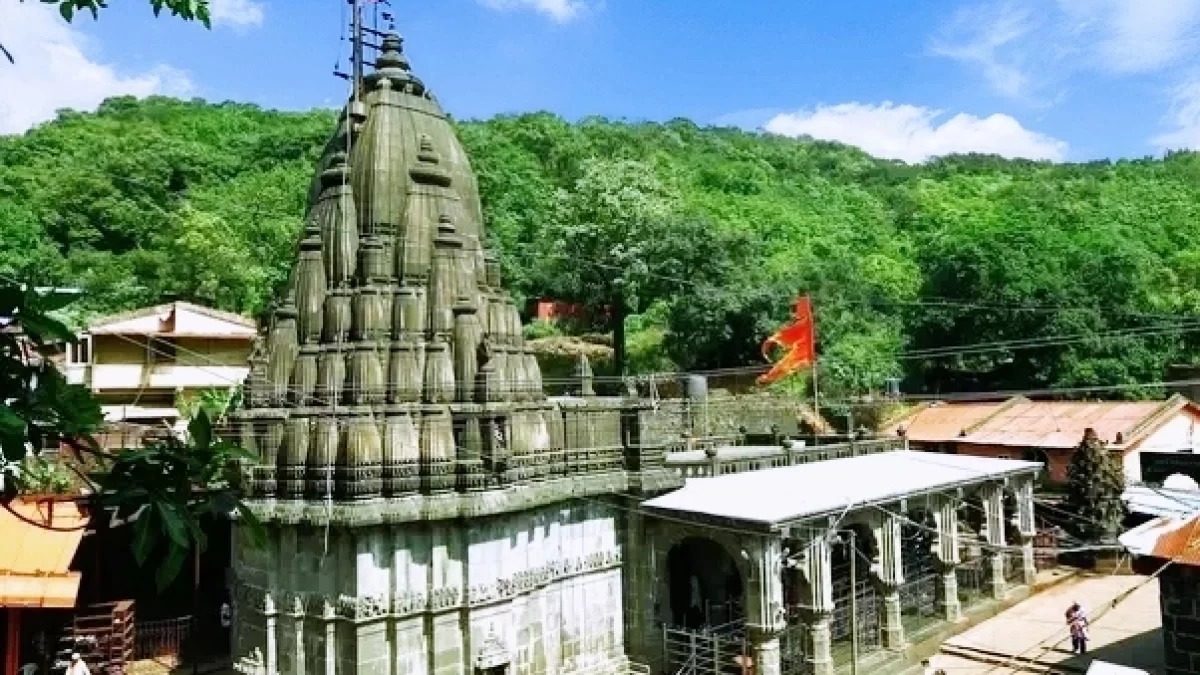
Nestled in the serene hills of the Sahyadri range, Bhimashankar is a place of unmatched natural beauty. The tranquil forests, lush greenery, and the glistening Bhimashankar Temple create an ambience that resonates with spirituality and serenity.
The legend of Bhimashankar is steeped in mythology. According to the Puranas, the demon king Tripurasura wreaked havoc on the gods and mortals. In their desperation, the gods sought the help of Lord Shiva. Bhagwan Shiva, in his formidable form, destroyed the demon king by firing a powerful arrow, which took the form of a Jyotirlinga.
The story of Bhimashankar Jyotirlinga revolves around the manifestation of this Jyotirlinga on the Sahyadri hills. The temple, built to honor this divine event, became a place of reverence and pilgrimage.
Devotees embark on a spiritual journey to reach Bhimashankar, often enduring a challenging trek through the Sahyadri forests. The steep climb is not just a test of physical endurance but a test of faith and determination. The pilgrimage serves as a reminder of the sacrifices made in devotion to the divine.
Bhimashankar Jyotirlinga is known for its unique representation of Lord Shiva, as it is adorned with intricate carvings and a majestic Shikhara (spire). The temple complex also houses the Kamalaja Mata temple, signifying the feminine aspect of the divine, and the Mokshakund, a sacred pool believed to wash away sins.
The temple’s spiritual significance is amplified by the captivating beauty of the Sahyadri forests and the serenity of the Bhimashankar Wildlife Sanctuary.
The story of Bhimashankar Jyotirlinga conveys a profound message – that the divine is not confined to a physical form but resides within the hearts of its devotees. The temple’s spiritual ambience serves as a reminder of the inner journey to self-realization and spiritual awakening.
Bhimashankar Jyotirlinga at Pune, Maharashtra, is not just a place of worship; it is a place of introspection and connection with the divine. It teaches us that spirituality is a path of inner strength and self-discovery, and that the divine presence can be felt in the beauty of nature and in the depths of our own hearts. The sacred shrine of Bhimashankar continues to inspire seekers and devotees, echoing the eternal roar of devotion in the heart of the Sahyadris.
7. Kashi Vishwanath Jyotirlinga:
Location: Varanasi, Uttar Pradesh.
Significance: Kashi Vishwanath is one of the holiest temples in Hinduism, dedicated to Lord Shiva as Vishwanath (Lord of the Universe).
Story: Varanasi, one of the oldest and holiest cities in India, is home to the revered Kashi Vishwanath Jyotirlinga, a shrine of profound spiritual significance. The story of Kashi Vishwanath Jyotirlinga is a journey through time, devotion, and the divine resonance of Lord Shiva’s abode.
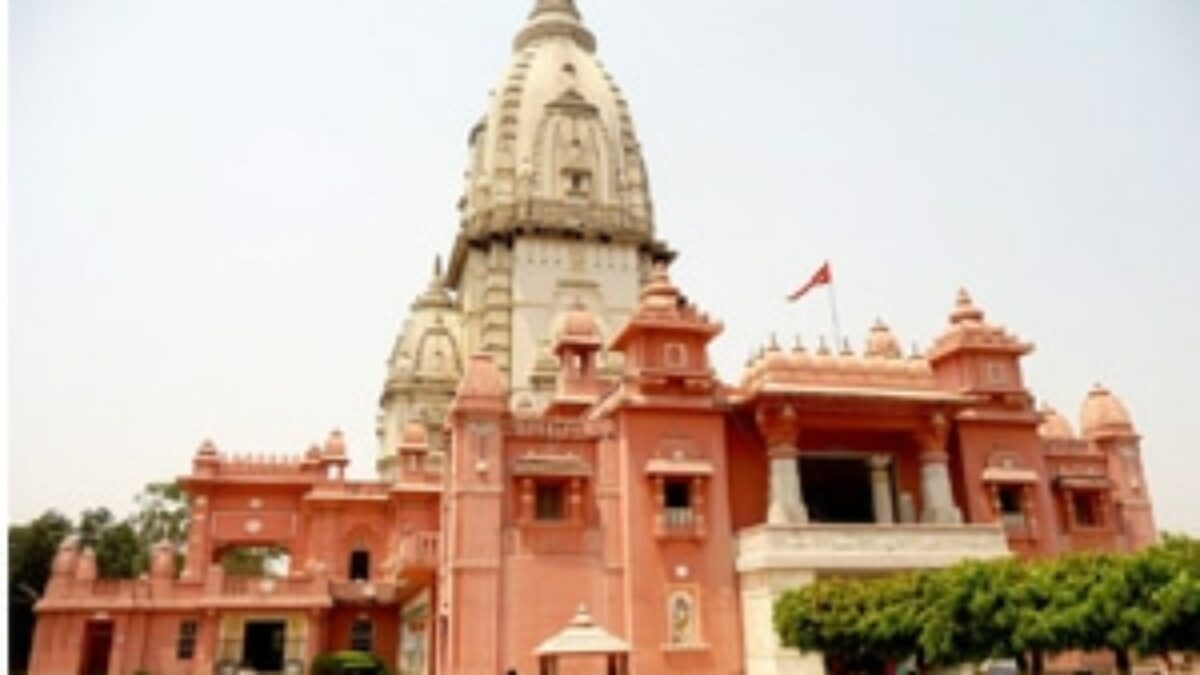
Varanasi, situated on the banks of the sacred Ganges River, has been a center of spirituality and cultural heritage for thousands of years. It is a city of ancient temples, winding ghats, and a palpable sense of divinity that attracts pilgrims from all corners of the world.
The legend of Kashi Vishwanath Jyotirlinga is deeply ingrained in the mythological fabric of Varanasi. It is believed that Lord Shiva established his abode in Varanasi, the holiest of all cities, to bless the faithful and provide a path to salvation.
According to Hindu mythology, Lord Shiva is said to have arrived at Kashi (Varanasi) after a long journey from Mount Kailash. Here, he is believed to have established the Kashi Vishwanath Jyotirlinga as a sign of his eternal presence in the city.
The Kashi Vishwanath temple, dedicated to Lord Shiva, is one of the most revered and ancient shrines in India. The temple’s architecture is a fusion of intricate carvings, vibrant colors, and spiritual ambience. Devotees from all walks of life come to seek blessings, perform rituals, and immerse themselves in the divinity of the temple.
The Kashi Vishwanath Jyotirlinga holds immense spiritual significance, as it is believed that a single visit to the temple can wash away a lifetime of sins and grant salvation. The temple complex also houses the Annapurna temple, dedicated to the Goddess of Food, and the Kalabhairav temple, symbolizing the divine aspect of time.
The Varanasi ghats along the Ganges River are integral to the spiritual journey, where devotees participate in rituals, take a dip in the holy river, and perform pujas to honor their ancestors.
The story of Kashi Vishwanath Jyotirlinga teaches us that spirituality transcends time and space. It is a pilgrimage of the soul, a journey within, and a quest for inner transformation. Kashi Vishwanath, the city of Lord Shiva, symbolizes the timeless presence of the divine in the heart of Varanasi.
Devotees and seekers from around the world visit the Kashi Vishwanath temple to experience the eternal connection between the human soul and the universal consciousness. Varanasi’s spiritual legacy continues to inspire and remind us that, in the heart of the ancient city, the divine presence of Lord Shiva awaits, to bestow blessings and grace on all who seek it.
8. Trimbakeshwar Jyotirlinga:
Location: Near Nashik, Maharashtra.
Significance: Trimbakeshwar is associated with the origin of the sacred river Godavari and is considered one of the holiest places for Kumbh Mela.
Story: In the heart of the lush Nashik district in Maharashtra lies the revered Trimbakeshwar Jyotirlinga, a temple of great spiritual significance. The story of Trimbakeshwar Jyotirlinga is a journey through time, devotion, and the profound connection between Lord Shiva and his devotees.
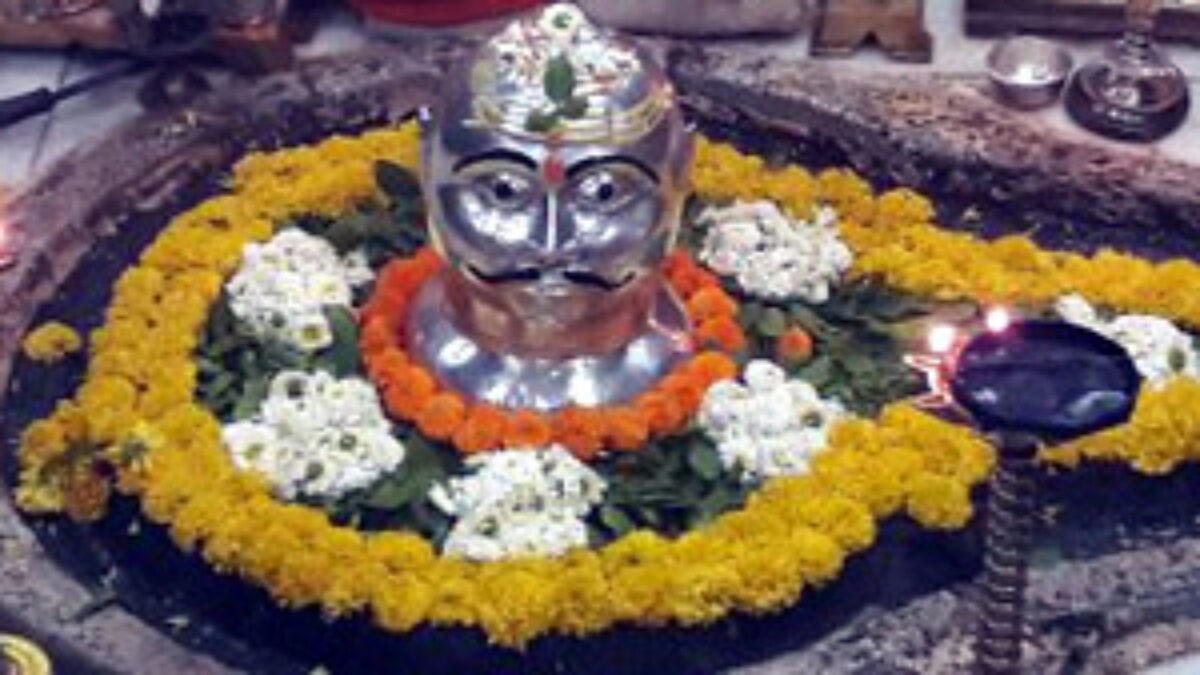
Nashik, often referred to as the wine capital of India, is also known for its spiritual heritage. Nestled in the Western Ghats, Nashik boasts picturesque landscapes, serene vineyards, and the sacred Godavari River, all of which create the perfect setting for Trimbakeshwar.
The legend of Trimbakeshwar Jyotirlinga is rooted in Hindu mythology. It is believed that Lord Shiva himself resided in the Trimbak town, located near Nashik, as a divine ascetic. Trimbak is the place where the sacred Godavari River originates, and the presence of Lord Shiva in this region holds profound spiritual significance.
According to mythology, the sage Gautama performed a rigorous penance to bring the sacred river Ganga to the Earth to purify the souls of his ancestors. Lord Shiva, pleased with his devotion, granted his request, and Ganga descended as the Godavari River. This event took place in Trimbak, making it a place of immense importance in Hinduism.
The Trimbakeshwar temple, dedicated to Lord Shiva, is a magnificent structure that blends intricate carvings and spiritual ambience. The temple complex also houses shrines dedicated to various deities, including Lord Rama and Lord Krishna, emphasizing the unity of diverse beliefs.
The temple’s grand architecture and spiritual significance make it a destination for devotees and seekers alike. Trimbakeshwar is known for its pristine ghats along the Godavari, where devotees perform rituals, take holy dips, and seek blessings.
Trimbakeshwar Jyotirlinga carries immense spiritual importance. It is believed that a visit to the temple can wash away sins and grant spiritual salvation. The temple’s unique features, such as the three-faced lingam representing Lord Brahma, Lord Vishnu, and Lord Shiva, and the deep spiritual resonance of the Godavari River, make it a site of spiritual awakening.
The story of Trimbakeshwar Jyotirlinga teaches us that the divine presence is not confined to a specific place or form but resonates within the hearts of its devotees. Trimbakeshwar represents the unity of the elemental forces, the spiritual flow of the Godavari, and the timeless presence of Lord Shiva.
Trimbakeshwar continues to be a pilgrimage destination where spirituality transcends time and space. Devotees and seekers visit the temple to experience the profound connection between the human soul and the universal consciousness. The sacred waters of Trimbakeshwar await, bestowing blessings and grace on all who seek them, and echoing the eternal divinity within the heart of Nashik.
9. Vaidyanath (Vaijnath) Jyotirlinga:
Location: Deoghar, Jharkhand.
Significance: Vaidyanath Jyotirlinga is associated with Lord Shiva as the divine healer and is believed to cure ailments and diseases.
Story: Nestled in the tranquil landscapes of Deoghar in Jharkhand, the Vaidyanath Jyotirlinga, also known as Vaijnath, stands as a symbol of divine healing and spiritual solace. The story of Vaidyanath Jyotirlinga is a testament to the power of faith and the unwavering connection between Lord Shiva and his devotees.
Deoghar, often referred to as the “City of Temples,” is a serene and picturesque town located in the Santhal Parganas region of Jharkhand. The town is a treasure trove of spiritual heritage, with the Vaidyanath Jyotirlinga at its heart.
The legend of Vaidyanath Jyotirlinga is shrouded in myth and devotion. It is believed that the temple is situated in the same place where Lord Shiva relieved the sage Ravana from the pain of an unbearable ailment. In a profound act of devotion, Ravana performed an intense penance to seek Lord Shiva’s blessings.
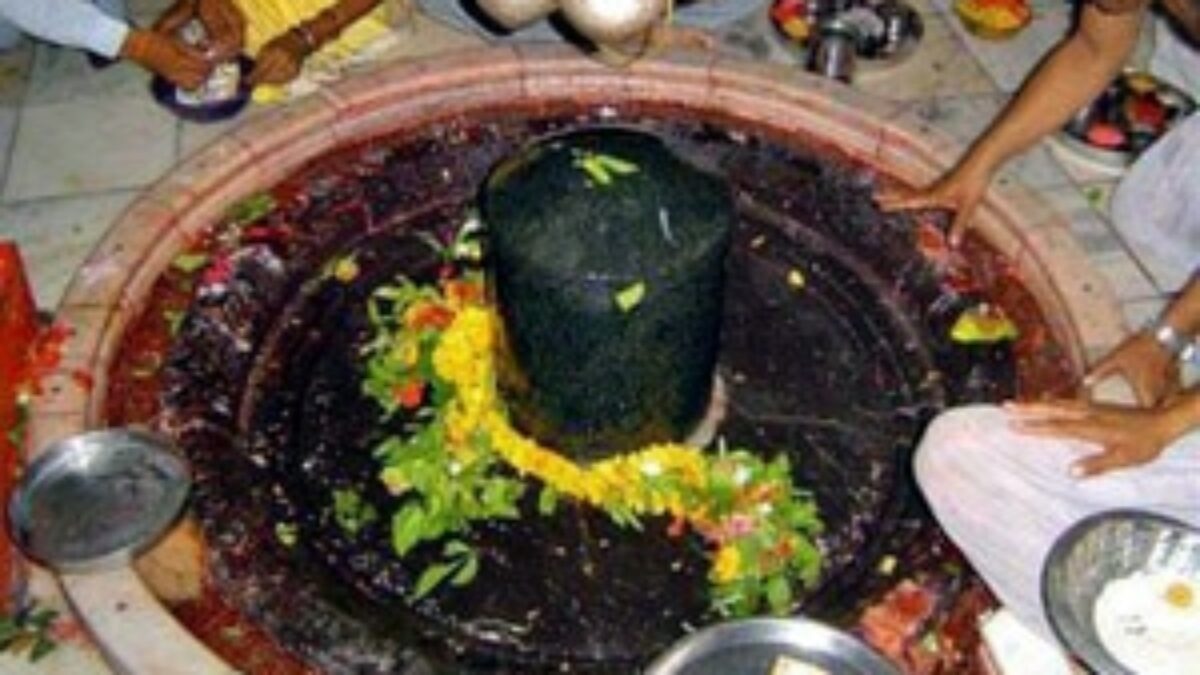
Pleased with Ravana’s unwavering devotion, Lord Shiva agreed to reside in Deoghar as the Vaidyanath Jyotirlinga, the Lord of Healing, to relieve him of his suffering. Ravana is said to have offered his ten heads to the deity as a symbol of his devotion, hence the name “Vaijnath,” meaning “the Lord who cures diseases.”
The Vaidyanath Temple, dedicated to Lord Shiva, is a magnificent architectural marvel adorned with ornate carvings and a serene atmosphere. The temple complex also features smaller shrines dedicated to various deities, emphasizing the harmonious coexistence of diverse spiritual beliefs.
Devotees and pilgrims from near and far visit the Vaidyanath Temple to seek blessings for healing, both physical and spiritual. The temple’s spiritual aura and its proximity to the beautiful Phalgu River contribute to its divine resonance.
Vaidyanath Jyotirlinga is renowned for its ability to grant physical and spiritual healing. Devotees believe that a visit to the temple can relieve them of ailments and bring peace to their souls. The temple is a place where faith meets the divine, and where seekers find solace in the belief that Lord Shiva is the ultimate healer.
The story of Vaidyanath Jyotirlinga teaches us that spirituality is not just a matter of rituals and prayers but a source of healing and rejuvenation. It is a reminder that the divine presence is not only found in the sacred texts but also within our own hearts.
Vaidyanath Jyotirlinga in Deoghar, Jharkhand, continues to inspire devotees to seek healing and spiritual awakening. It is a place where the mortal connects with the immortal, where ailments find relief, and where the unwavering faith in Lord Shiva’s healing power endures. The temple stands as a beacon of hope and solace in the heart of Deoghar, echoing the timeless message of divine healing.
10. Nageshwar (Aundha Nagnath) Jyotirlinga:
Location: Near Dwarka, Gujarat.
Significance: Nageshwar is one of the Dwadasha Jyotirlingas and is closely associated with Lord Krishna and his legends.
Story: Nestled along the pristine coastline of Dwarka, Gujarat, the Nageshwar Jyotirlinga, also known as Aundha Nagnath, stands as a symbol of the divine serpent, Lord Shiva’s protector. The story of Nageshwar Jyotirlinga is a tale of devotion, mythological significance, and the sacred bond between Lord Shiva and the serpent.
Dwarka, one of the holiest cities in Hinduism, holds immense spiritual significance as the abode of Lord Krishna. Along its sacred shores lies the Nageshwar Jyotirlinga, a temple dedicated to Lord Shiva, a deity revered by millions of devotees.

The story of Nageshwar Jyotirlinga is deeply rooted in Hindu mythology. It is believed that a demon named Daruka, tormented by Lord Krishna’s divinity, sought refuge in the sea, where he continued to harass the world. The divine serpent, Adi Sesha (or Ananta), also known as Lord Shesha, came to the rescue, transforming into a lingam and vanquishing the demon.
Lord Shiva, appearing as Nageshwar, assumed the form of a Jyotirlinga to bless his devotees and commemorate the divine victory over Daruka. The Nageshwar Jyotirlinga is said to symbolize Lord Shiva’s role as the protector and savior of his devotees from the forces of darkness.
The Nageshwar Jyotirlinga temple, dedicated to Lord Shiva, is an architectural marvel adorned with intricate carvings, lush gardens, and a tranquil atmosphere. The temple complex also houses a large idol of Lord Shiva and a sacred pond known as the Shesha Kund.
Pilgrims and devotees from across India visit the Nageshwar Temple to seek Lord Shiva’s blessings and witness the divine energy that envelops the site. The temple’s serene location by the Arabian Sea adds to the spiritual allure.
Nageshwar Jyotirlinga is renowned for its divine power and its role as a protector. Devotees believe that a visit to the temple can safeguard them from harm and bring peace and solace to their lives. It is a place where faith meets protection, where devotees find shelter in Lord Shiva’s divine embrace.
The story of Nageshwar Jyotirlinga conveys the profound message that Lord Shiva is not just a deity but a guardian and protector of his devotees. It is a reminder that spirituality is not merely a set of rituals but a source of divine shelter and salvation.
Nageshwar Jyotirlinga near Dwarka, Gujarat, continues to inspire devotees to seek protection and spiritual awakening. It is a place where the serpent’s embrace brings solace, where the divine presence is felt by all, and where the unwavering faith in Lord Shiva’s protective power endures. The temple stands as a haven of spiritual protection and divine blessings in the heart of Dwarka, echoing the timeless message of Lord Shiva’s guardian role.
11. Rameshwar (Ramanathaswamy) Jyotirlinga:
Location: Rameswaram Island, Tamil Nadu.
Significance: Ramanathaswamy is known for its unique architecture and is associated with the story of Lord Rama’s journey to Lanka.
Story: Nestled on a picturesque island in the southern tip of India, Rameswaram Island is home to the sacred Rameshwar Jyotirlinga, also known as Ramanathaswamy. The story of Rameshwar Jyotirlinga is a journey through devotion, mythological significance, and the profound connection between Lord Shiva and his devotees.
Rameswaram Island, located in the Gulf of Mannar, is a place of exceptional natural beauty and spiritual significance. The island’s pristine beaches, turquoise waters, and lush landscapes form a backdrop for the revered Rameshwar Temple.
The story of Rameshwar Jyotirlinga is deeply rooted in Hindu mythology. It is believed that Lord Rama, the seventh incarnation of Lord Vishnu, sought to worship Lord Shiva to seek forgiveness for the sin of killing Ravana, a Brahmin. Lord Rama dispatched his trusted devotee, Lord Hanuman, to Mount Kailash to fetch a Jyotirlinga for the worship.
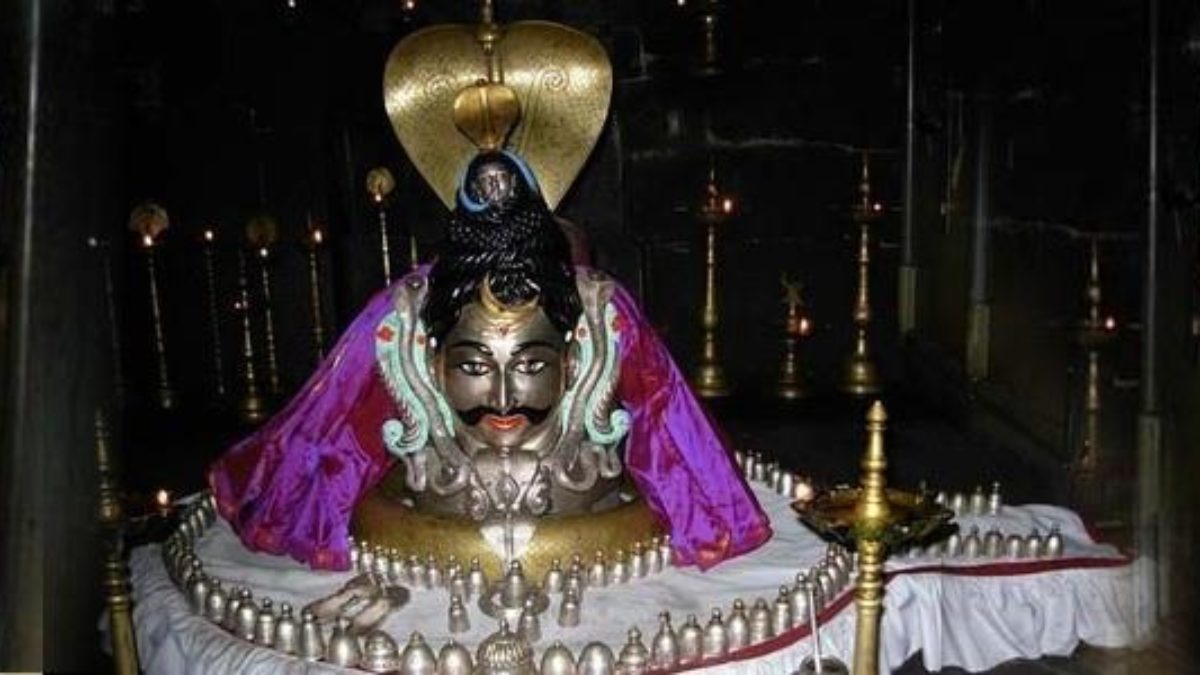
When Lord Hanuman was delayed in returning with the sacred lingam, Lord Rama, with the help of Goddess Sita and Lord Lakshmana, created a lingam using sand from the shores of Rameswaram. This lingam came to be known as Rameshwar Jyotirlinga and remains the presiding deity of the island.
The Rameshwar Temple, dedicated to Lord Shiva, is an architectural masterpiece adorned with a magnificent corridor that spans over 1,200 meters and 1,000 exquisitely sculpted pillars. The temple’s serene ambiance and divine resonance make it a significant pilgrimage destination.
The temple also houses a sacred well, known as the Agni Theertham, where pilgrims take a holy dip to cleanse themselves spiritually. The temple’s beauty, along with the surrounding pristine beaches, adds to its spiritual allure.
Rameshwar Jyotirlinga is renowned for its role in absolving sins and granting spiritual redemption. Devotees believe that a visit to the temple can cleanse them of their past transgressions and bring them closer to salvation. It is a place where faith meets atonement, and where devotees find solace in Lord Shiva’s divine presence.
The story of Rameshwar Jyotirlinga conveys the profound message that Lord Shiva is the harbinger of redemption and forgiveness. It is a reminder that spirituality is not just a matter of rituals but a source of divine redemption and renewal.
Rameshwar Jyotirlinga at Rameswaram Island, Tamil Nadu, continues to inspire devotees to seek spiritual redemption and blessings. It is a place where the divine presence absolves sins, where the waters of atonement cleanse the soul, and where the unwavering faith in Lord Shiva’s forgiveness endures. The temple stands as a beacon of hope and redemption in the heart of Rameswaram Island, echoing the timeless message of divine forgiveness.
12. Grishneshwar Jyotirlinga:
Location: Near Ellora Caves, Maharashtra.
Significance: Grishneshwar is known for its unique architectural style and its association with Lord Shiva.
Story: Nestled near the renowned Ellora Caves in Maharashtra, the Grishneshwar Jyotirlinga stands as a beacon of spirituality and devotion. The story of Grishneshwar Jyotirlinga is a journey through time, mythology, and the profound connection between Lord Shiva and his devotees.
Ellora, a UNESCO World Heritage site, is famous for its ancient rock-cut cave temples that beautifully blend various architectural styles and religious traditions. Amidst this architectural marvel lies the sacred Grishneshwar Jyotirlinga.
The story of Grishneshwar Jyotirlinga is steeped in Hindu mythology. It is believed that a pious woman named Kusuma, devoted to Lord Shiva, was married to a cruel and unfaithful man named Sudharm. Despite her devotion, Kusuma faced constant hardships and insults from her husband and in-laws.
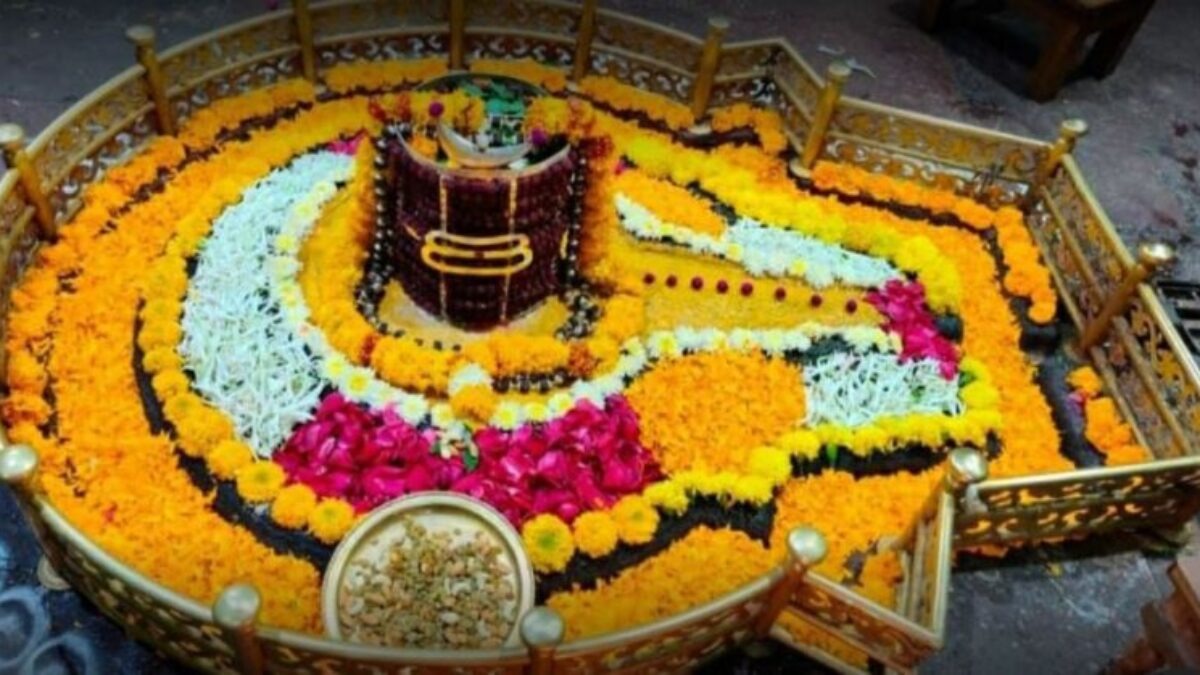
In her quest to find solace and seek blessings from Lord Shiva, Kusuma undertook rigorous penance. Impressed by her devotion, Lord Shiva appeared before her as Grishneshwar, the Lord of Compassion, and granted her three wishes. Kusuma’s first wish was to transform her husband into a better man, her second wish was to create a magnificent temple in honor of Lord Shiva, and her final wish was to bless the world with eternal peace and happiness.
The Grishneshwar Temple, dedicated to Lord Shiva, is a remarkable edifice that showcases intricate carvings, spiritual ambiance, and a serene atmosphere. The temple complex also houses smaller shrines dedicated to various deities, signifying unity in diversity.
Devotees from near and far visit the Grishneshwar Temple to seek blessings, witness the divine energy, and experience the sacred resonance of the site. The temple’s spiritual significance is further enhanced by the exquisite sculptures and serene surroundings.
Grishneshwar Jyotirlinga is renowned for its divine blessings and the fulfillment of devotees’ wishes. It is believed that a visit to the temple can bring prosperity, harmony, and inner peace. Grishneshwar is a place where faith meets compassion, and where devotees find solace in the benevolence of Lord Shiva.
The story of Grishneshwar Jyotirlinga conveys the profound message that Lord Shiva is the bestower of compassion and the fulfiller of devotees’ wishes. It is a reminder that spirituality is not just a set of rituals but a source of divine blessings and the fulfillment of heartfelt desires.
Grishneshwar Jyotirlinga near Ellora Caves, Maharashtra, continues to inspire devotees to seek blessings and experience spiritual resonance. It is a place where compassion reigns, where wishes find fulfillment, and where the unwavering faith in Lord Shiva’s benevolence endures. The temple stands as a beacon of hope and blessings in the heart of Ellora, echoing the timeless message of divine compassion.
Also Read :
jyotirlingas in maharashtra : మహారాష్ట్రలోని 5 జ్యోతిర్లింగాలు

